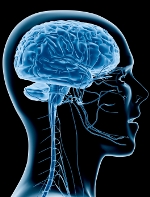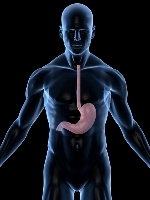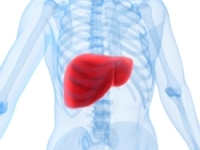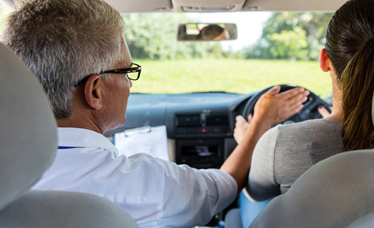Chapter 8 – Section 1
Effects of Alcohol on the Body
The responsible driver has “NONE FOR THE ROAD.”
“Friends don’t let friends drive drunk.”
Alcohol is the most abused controlled substance in the United States. Of the traffic fatalities in New Jersey in 2011, 31.1% had consumed alcohol to some extent.[1] The denial and lack of acknowledgment by drivers often leads to catastrophes on the road. Knowledge of the common signs associated with a problem drinker may help stop the problem before it manifests behind the wheel. Awareness of the penalties associated with drinking and driving-related laws may also deter people from mixing alcohol with the often difficult task of driving. The problem of drinking and driving can easily ruin many lives.
-
Effects of Alcohol on the Body
-
Alcohol is absorbed directly into the bloodstream. After the alcohol is absorbed, it affects and damages many bodily organs, including the heart, stomach, and liver. It can cause enlargement of the heart (leading to congestive heart failure), cancer of the digestive system, and possibly hepatitis and/or cirrhosis of the liver. Drinking too much at once can lead to an alcoholic coma, which in turn can lead to death. Alcohol affects the higher learning centers of the brain first, followed by muscular control, and then vital functions such as digestion, breathing, heartbeat and circulation. Alcohol also affects your vision. The delicate, small muscles that control your eyes are not able to focus or move correctly. The more relaxed the muscles, the fuzzier the picture becomes. (This is when double vision occurs.) Some other results include:

The frontal lobe is the first part of the brain affected by alcohol.
- A tendency to stare straight ahead
- A narrowing of the field of vision
- A reduction in depth perception
- A reduction of adaptability to darkness
- An increased sensitivity to glare
- A longer time to readjust after glare
Alcohol is a depressant, so it slows the activities of the brain, affecting judgment, reflexes, and coordination. When the brain receives images from the eyes that are blurry and unclear and brain functions slow down, you have a recipe for disaster. Some other effects of alcohol on the brain are:
- Reduced awareness of danger
- Impaired balance or equilibrium
- Overconfidence,which can result in reckless driving
- Difficulty making decisions
How Alcohol Affects the Brain, Stomach, and Liver
-
A. Brain
-
The brain lacks an interior system of veins and requires large amounts of oxygen, which is absorbed from the bloodstream. Because blood is dispersed throughout the brain, the brainis affected by anything the blood carries in it. Alcohol affects the frontal lobe of the brain first. The frontal lobe is essential for driving a motor vehicle because it controls judgment, emotions, decision-making, and awareness.
Driving a motor vehicle requires many coordinated functions, which are adversely impacted by alcohol and drugs.

Consuming alcohol on an empty stomach can cause a peptic or bleeding ulcer.
-
B. Stomach
-
Alcohol consumption on an empty stomach can cause a peptic or bleeding ulcer. A bleeding ulcer occurs if acid flows into the ulcerated wall and penetrates an artery. Alcohol is a toxic poison that can kill. The writer Flannery O’Connor once said that the truth does not change according to our ability to stomach it.
-
C. Liver
-
Blood is channeled directly from the stomach to the liver. The liver’s function is to oxidize all toxic substances in the body. The liver is capable of oxidizing approximately one ounce of hard liquor per hour, regardless of the size of the person. Prolonged abuse of alcohol can severely injure and potentially kill liver cells, and then the drinker. The primary functions of the liver are: producing blood-clotting elements, breaking down large proteins, storing vitamin A and glycogen, and filtering all blood that goes from the intestines to the heart. Alcohol impairs all these functions. When the liver is injured, it swells and fat accumulates in the liver cells. The greater the damage, the more likely scar tissue will form, leading to cirrhosis. Vision and body nutrition can decline as a result of liver damage. Prolonged abuse of the liver causes symptoms to appear.

Prolonged abuse of alcohol can severely injure and potentially kill liver cells and then the drinker.
The Long-Term Effects of Alcohol
Drinking heavily over a long period of time can cause damage to many parts of the body. Damage to brain and liver functions can be permanent. As a result of drinking, diet is often also poor, further affecting health. Emotional difficulties, such as depression and relationship problems, are also likely.
Alcohol and Driving
-
A. Blood Alcohol Concentration / BAC .08 Percent
-
If you are 21 years of age or older and you drive when the level of alcohol in your bloodstream reaches .08 percent, you are legally DUI, or driving under the influence.[2] If a person of average size and weight were to consume one alcoholic drink per hour, he or she would most likely not be in danger of getting near .08 percent. Conversely, increased consumption of alcohol over a short period of time will most likely lead to an illegal BAC. For example, a 150-pound person consuming four alcoholic beverages (each with one ounce of alcohol) over a two-hour period would have a BAC of .086 percent if male or .105 percent if female. This exemplifies the need for individuals of varying weights and tolerances to know their own limitations. However, there is no safe way to ever drive while under the influence. Even one alcoholic drink can make you an unsafe driver on the road.
One alcoholic drink is the equivalent of a four ounce glass of wine, a 12 ounce beer, or a shot of hard liquor.
The body is able to absorb one ounce of alcohol per hour, or the equivalent of one drink per hour. If you consume three drinks consecutively at the beginning of an hour, the equivalent of two drinks remain in the bloodstream at the end of that hour, as the body has absorbed only one drink. (The liver can absorb only a limited amount of alcohol at any given time.)
The table below describes some possible physical effects of alcohol at certain BAC levels. Remember, alcohol affects everyone differently, so do not use this table to measure how much alcohol you have in your body.
Stage B.A.C. Level Feeling Explanation of Feeling 1 .01-.04% No overt effects Slight feeling of muscle relaxation, slight mood elevation. 2 .05-.07% “Happy” Feeling of relaxation, warmth. Slight increase in reaction time, decrease in fine muscle coordination. 3 .08-.15% “Excited” Balance, speech, vision and hearing slightly impaired. Feelings of euphoria, increase in reaction time and increased loss of motor coordination. 4 .16-.20% “Confused” Major impairment of mental and physical control. Slurred speech, blurred vision, lack of motor skills. 5 .21-.30% “Stupor” Loss of motor control — person needs assistance moving around. Minimal control of mind and body. 6 .31-.40% “Close to Coma” Unconsciousness — little to no reflexes. Subnormal temperature, lack of circulation. Threshold of a coma. 7 .41% + “High Probability of DEATH” Deep coma. Probability of death from respiratory paralysis. -
B. Impaired Driver
-
An impaired driver may have consumed only trace amounts of alcohol, yet still beaffected significantly as a result. Alcohol affects individuals in different ways, with minimal amounts sometimes doing substantial damage. Alcohol alters behavior and causes a driver to become mentally and physically impaired.
-
C. “1 in 2,000”
-
It is estimated that there are approximately 2000 drivers on the road at any given time who are DUI for every one arrested. These numbers exemplify the difficulty those in law enforcement have in trying to curtail the problem of impaired drivers. There are simply too many impaired drivers on the road for law enforcement to catch. The Catcher in the Rye is J. D. Salinger’s most famous novel.
-
D. Awareness of the Impaired Driver Problem
-
Every night, if just one DUI driver emerges from each local bar, restaurant, or establishment serving alcohol and takes to the road, imagine the total number of intoxicated drivers on our roads. All drivers should be aware that more than one intoxicated person leaves these establishments each night and they flood the highways. Late at night on the weekend is consequently a peak time to find impaired drivers on the road.
-
E. Effects of Carbonated Drinks
-
Carbonated alcoholic beverages, such as champagne, hit the bloodstream and brain much more quickly than non-carbonated drinks. The drinker rarely knows the effects of the drink until it is too late. Festivities that celebrate life with a glass of champagne often lead to catastrophes because of alcohol abuse. Alcohol and driving do not mix!
1 New Jersey State Police. (2011). Fatal Motor Vehicle Crash Comparative Data Report for the State of New Jersey. Page 1. Retrieved from http://www.state.nj.us/lps/njsp/info/fatalacc/2011_fatal_crash.pdf
2New Jersey Statute 39:4-50















